How to Delete Django Account With Password
Django Software's app-building framework allows users to "build better apps more quickly with less code." The framework runs on PYTHON code and simplifies the app-building process. If you no longer wish to use Django, you may be wondering how to delete your Django account with a password. We found answers for you and this article will discuss the complex process of . Then we discuss how DoNotPay can handle the process for you quickly, easily, and successfully. Here are more articles from the Delete Accounts product series.
- Delete Yahoo Account
- How To Delete eHarmony Account
- Delete Instagram Account
- How To Delete Uber Account
- How To Delete Gmail Account
Why Should You Delete Old/ Unused Accounts?
Having old or unused accounts, even if they are , puts your information at risk. Data breaches that occur go unnoticed when there are unmonitored accounts and sensitive information gets compromised. When you store personal information online there is always the risk that it could fall into the wrong hands. When your information is posted on multiple sites, especially ones you do not even use, your information is much more likely to be compromised.
How To Delete A Django Account With Password On Your Own
Django makes app-building super easy and provides a framework to build on. When you create a project you use Django to complete the building process and the PYTHON code your app will run on. More than just an account, Django becomes a part of your project. If you decide to delete your account, you will need to decide if you want to delete the superuser account, if you want to continue using the app-builder, or if you want to remove your project from the terminal altogether.
Deleting A Superuser
- If you are the creator of the project, you are likely a superuser. This means you have all the permissions. If you are no longer going to be the superuser of the project, you will need to create a new superuser.
- The new superuser allows you to manage your password or delete users.
- This solution works if the project continues as is but without you.
Deleting The App-Builder From Your Project
- If your project continues but without the app-builder, sign in to your project and go to settings.py.
- In the INSTALLED APPS folder you can select Django and remove it.
- This solution will stop Django from loading your project, but it does not remove Django's files.
Delete Django Files From Project
- Go to your project directory.
- Delete the app directory from your PYTHONPATH.
Delete Your Project From The App-Builder's Terminal
- The project can be removed from the app builder's terminal if you use an SQLite database. Any other database requires manual removal.
- Find the project folder and choose to delete it.
Issues Related To Deleting A Django Account With Password
There are many choices and options to choose from to delete a Django account. None of the options are easy to understand. Why go through the process of removing the app builder from the project and removing the project from the terminal when DoNotPay can delete the account for you?
Methods of Deleting Accounts
| DoNotPay | YES |
| Phone | NO |
| Website | YES |
| In-Person | NO |
| NO | |
| Live Chat | NO |
| NO |
How DoNotPay Helps With Managing Your Accounts
The Delete Accounts product is not the only product DoNotPay offers for managing your accounts. Other account management products include Recover Account Passwords, Unban My Account, and Manage Subscriptions.
Use DoNotPay To Delete A Django Account With Password
The Delete Accounts product is an account management solution that DoNotPay offers users to help them secure their data and protect their privacy online.
How to delete old accounts using DoNotPay:
If you want to delete old accounts but don't know where to start, DoNotPay has you covered in 7 easy steps:
- Go to Delete Old Accounts product on DoNotPay.
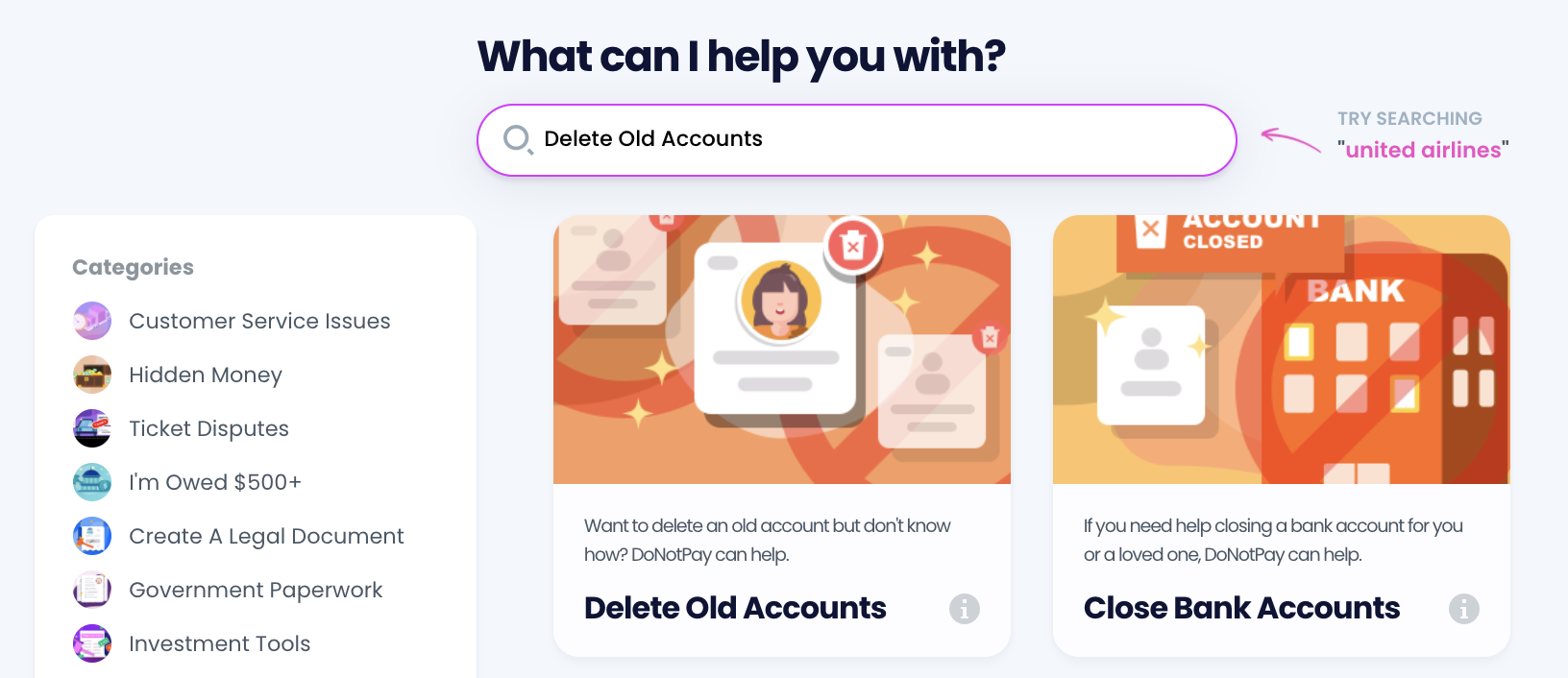
- Select the type of account you are trying to delete, such as email, streaming service, social media, gaming, eCommerce, and more.
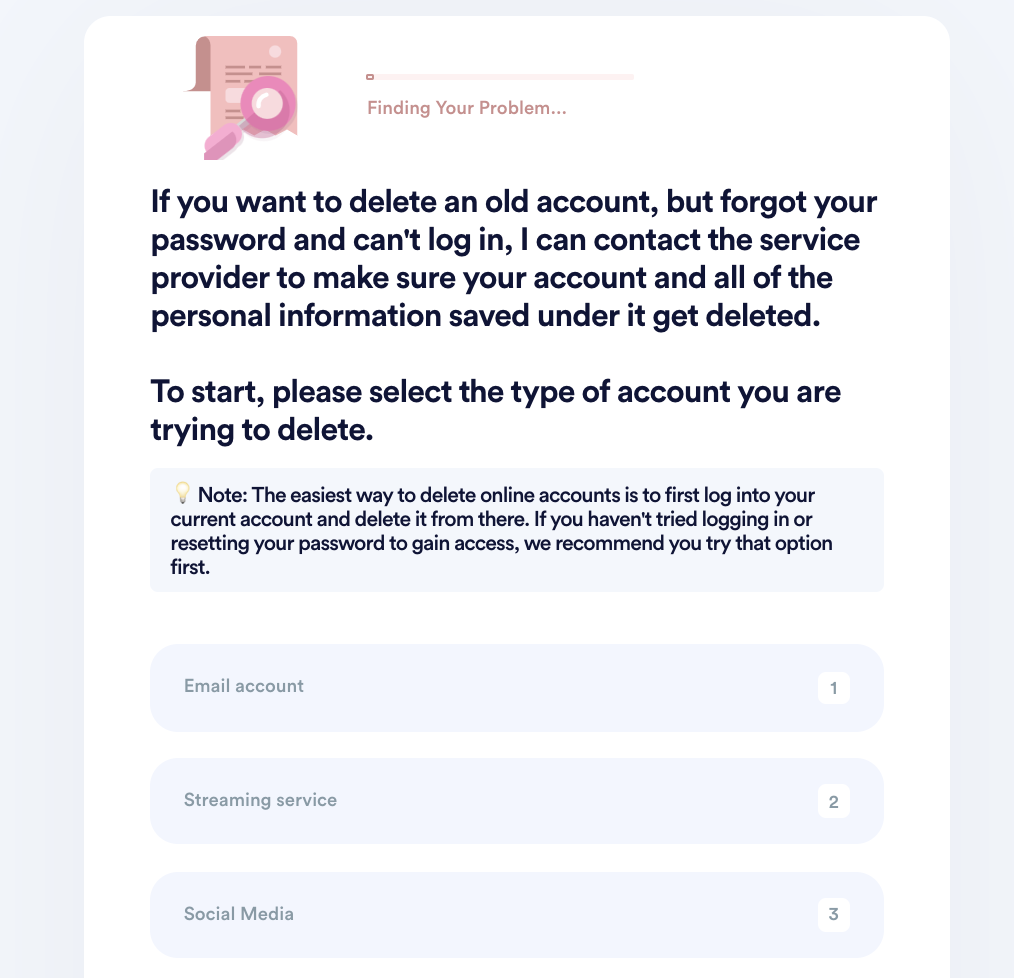
- Tell us more about your account, including usernames and associated emails/phone numbers.

- Help us verify your account ownership by entering the date you first created the account, when you last logged in, any payment methods saved under the account, etc.
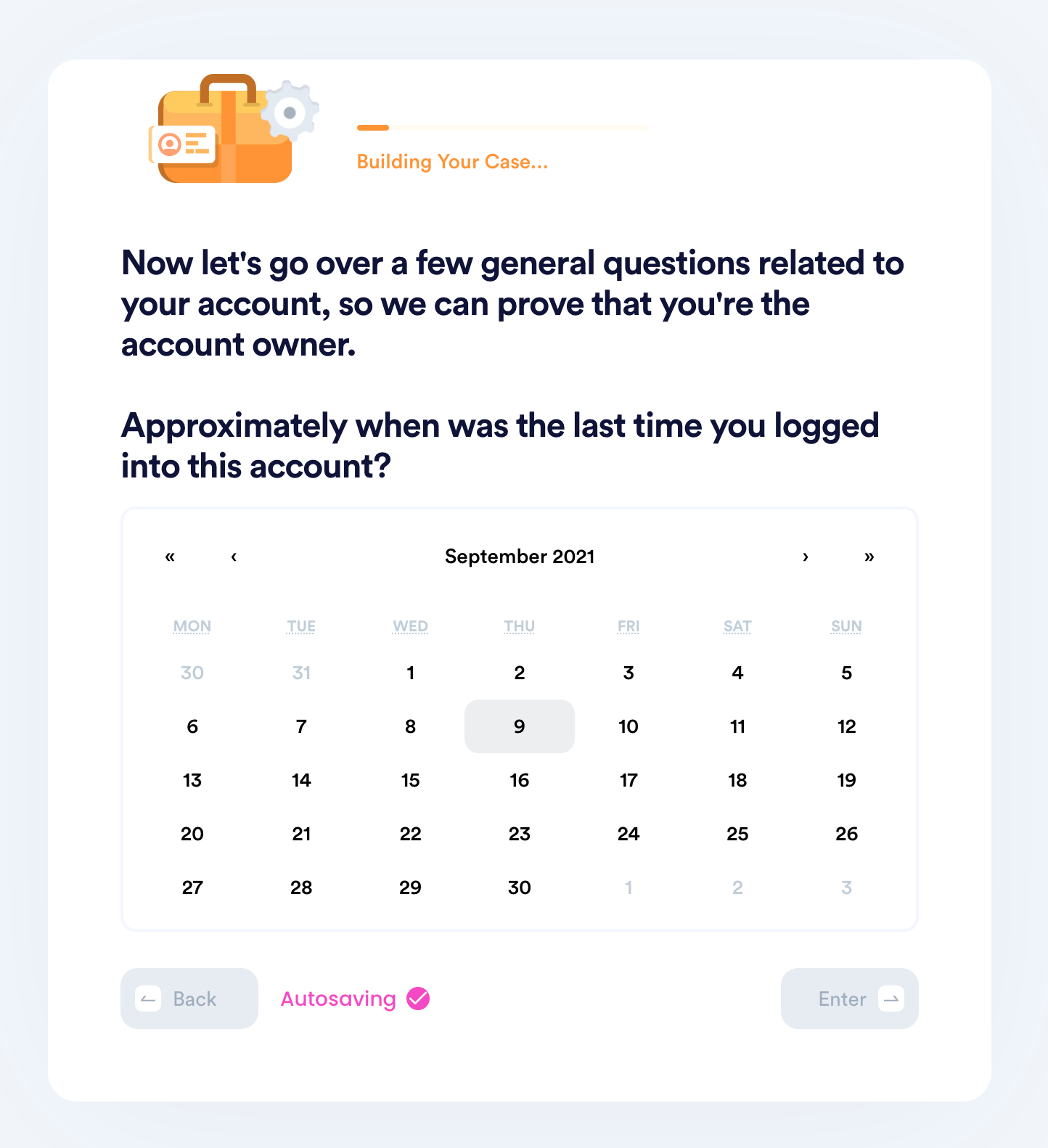
- Upload photographic evidence if you have any that can help prove your account ownership.
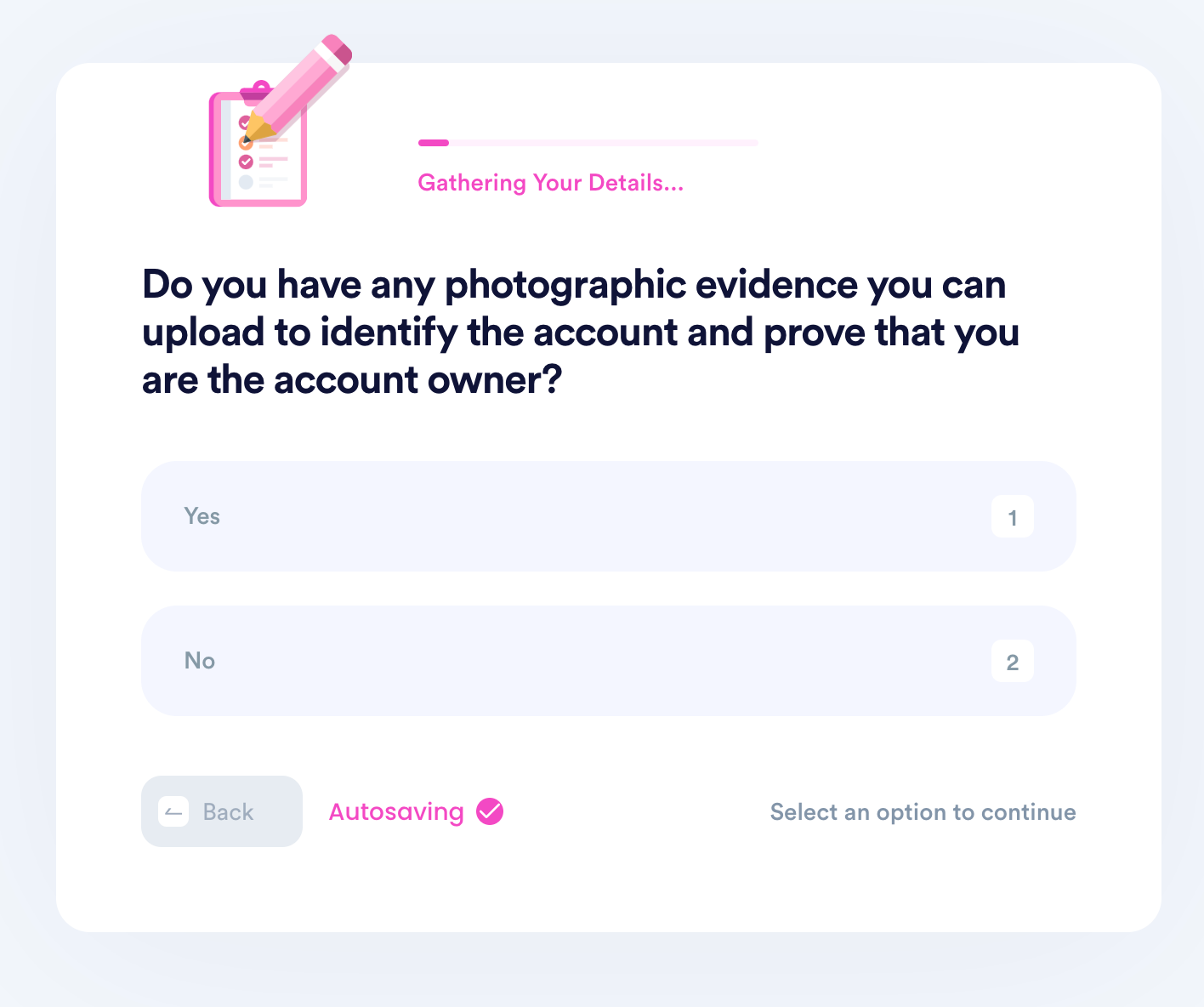
- Enter any last known or previously used passwords.
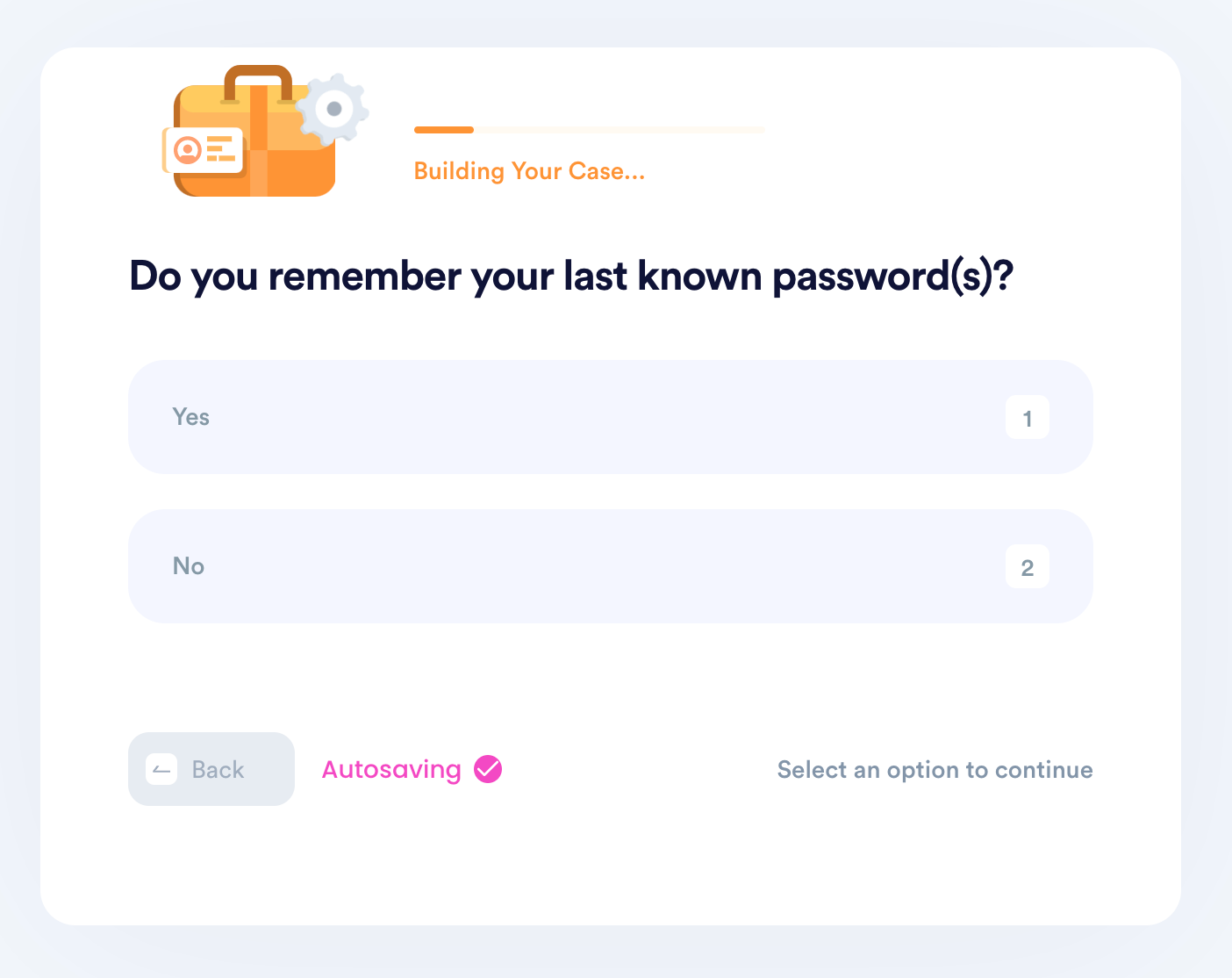
- Enter your contact information and submit the task!
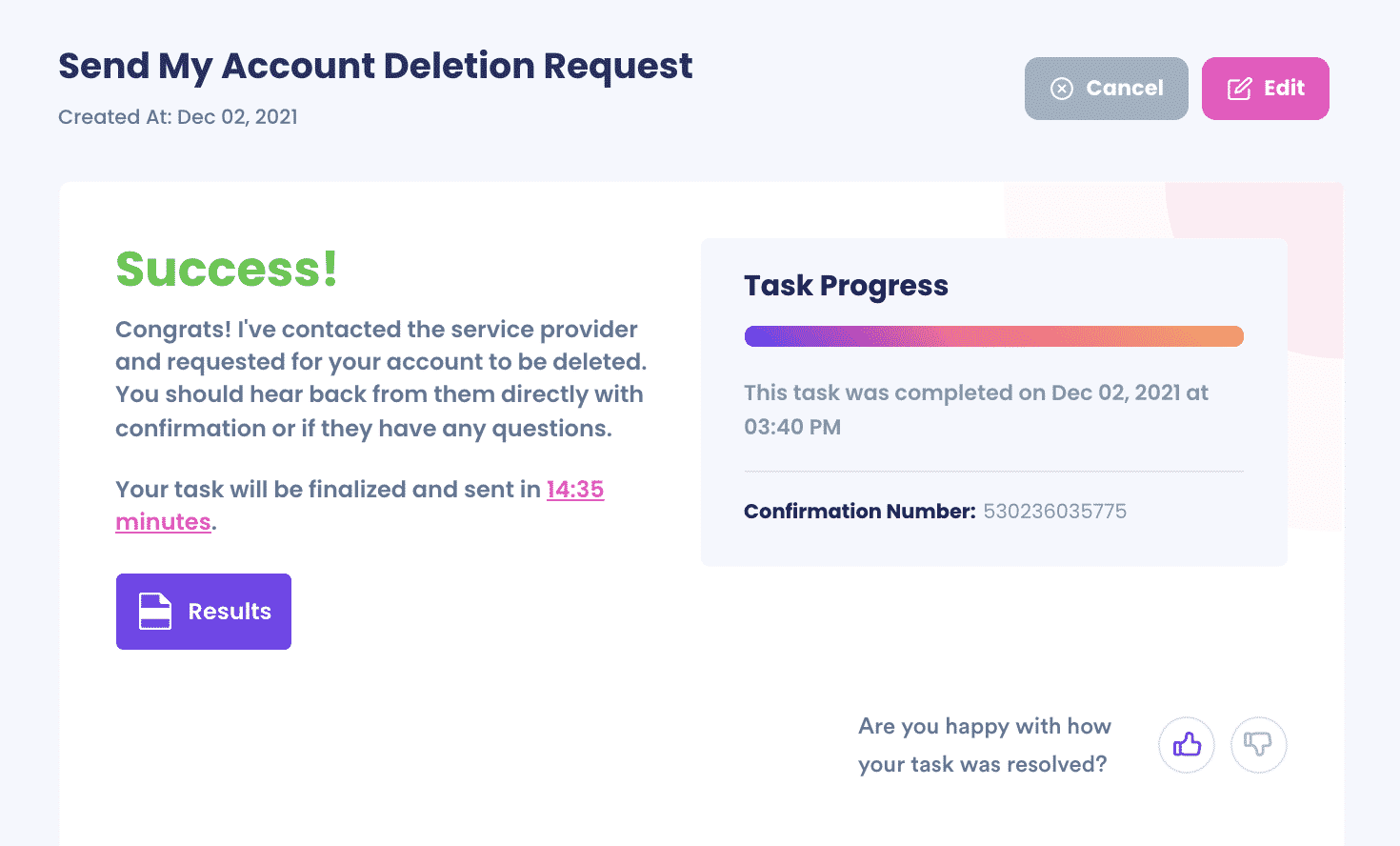
And that's it. DoNotPay will submit a request to Django on your behalf, and ask them to delete your old account, as well as any other personal information associated with the account.
DoNotPay Works Across All Accounts
The Delete Accounts product DoNotPay offers will allow you to handle all of those old accounts that put your security at risk. With or without usernames and passwords, the Delete Accounts product will handle deleting your old accounts quickly, easily, and successfully. The product works on email accounts, streaming services, gaming services, e-Commerce, and social media accounts. Here are some more articles from the Delete Accounts product series.
- How To Delete A Facebook Account
- Delete AOL Account
- How To Delete Venmo Account
- How To Delete A PayPal Account
- How To Delete An Amazon Account
What Else DoNotPay Can Do
The products from can save you time and money on a wide range of time-consuming and complicated tasks. Check out some of the other product series and find a few more ways for DoNotPay to save you time and money quickly, easily, and successfully.
- Item Return Requests
- Free Trials
- File A Complaint
- Appeal Banned Accounts
 By
By